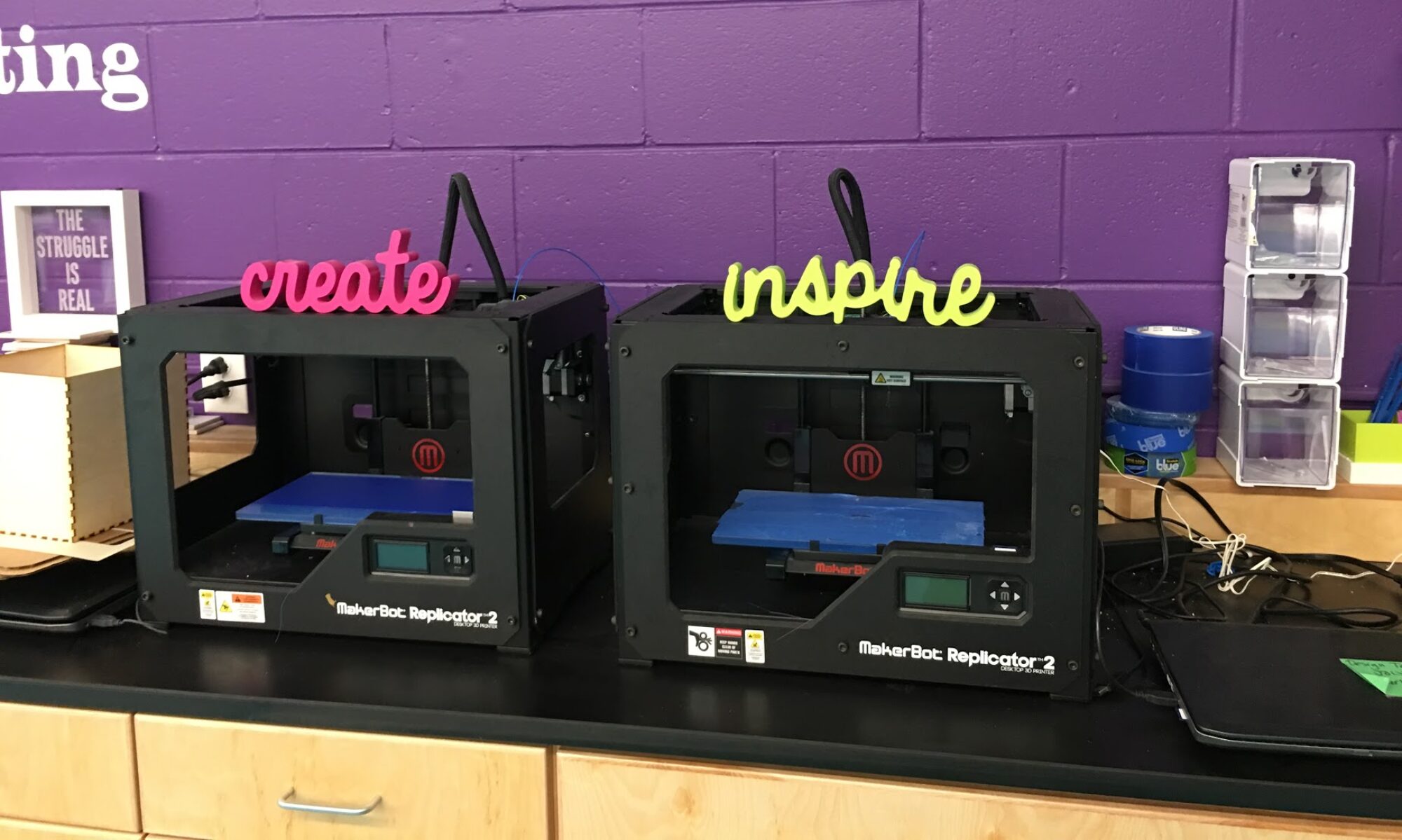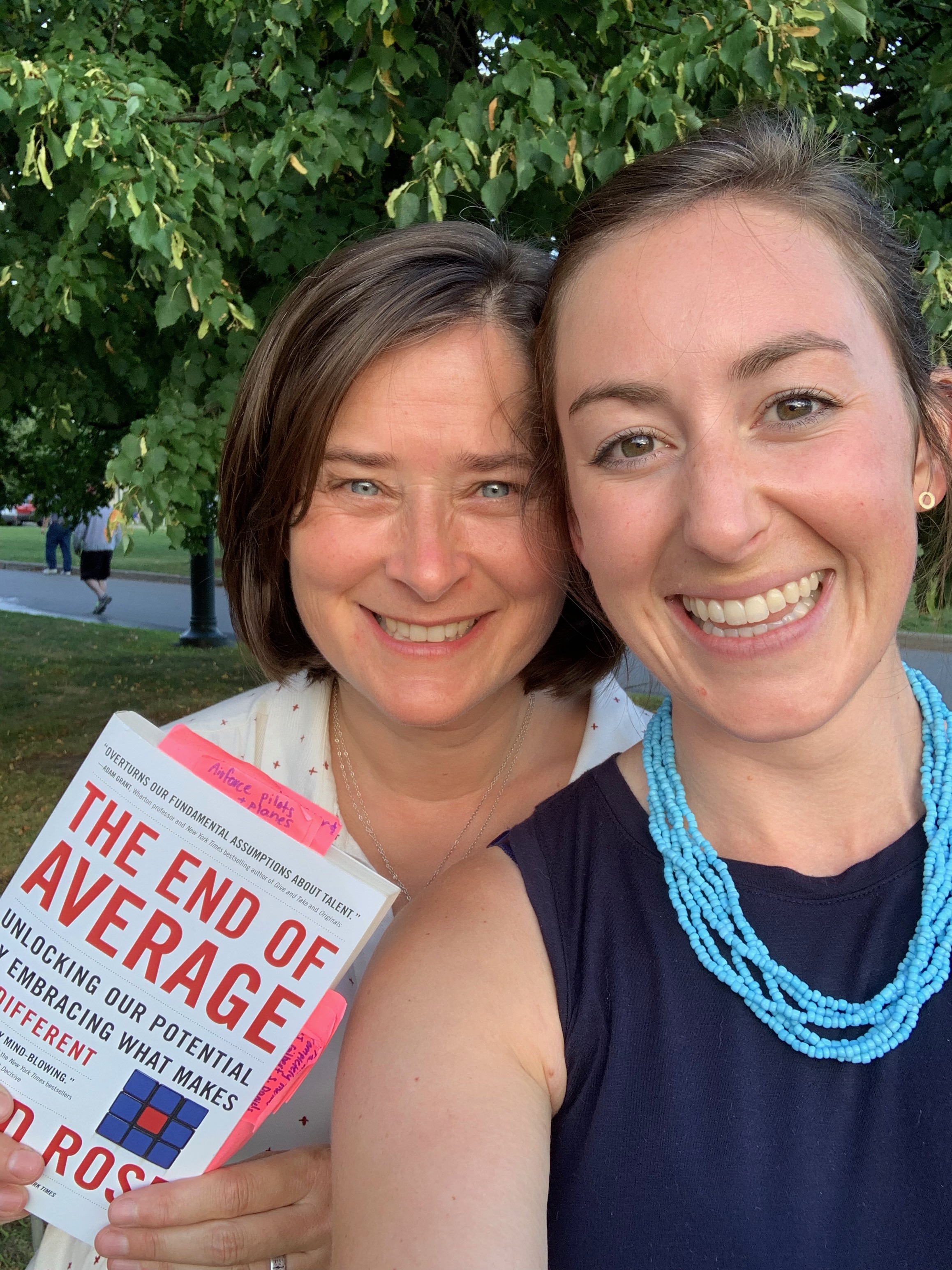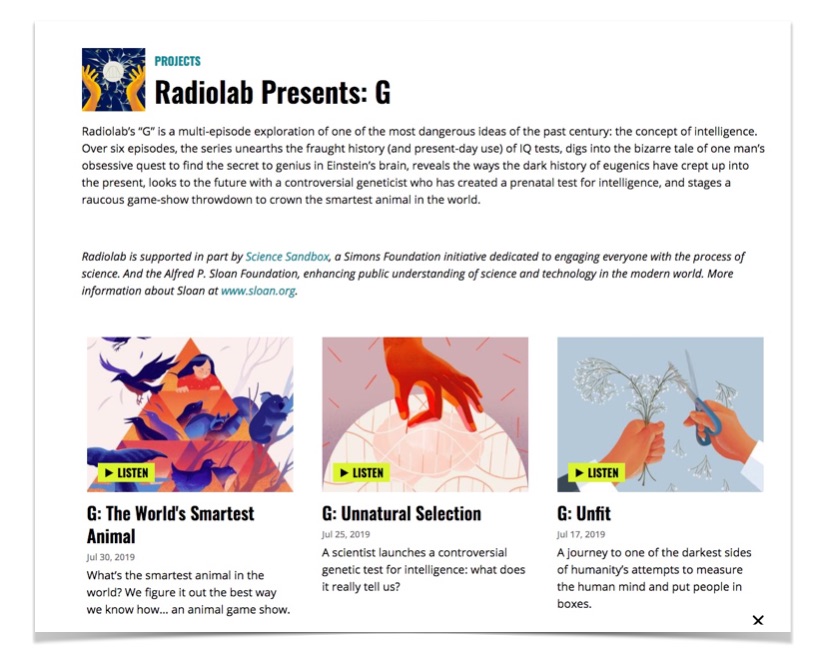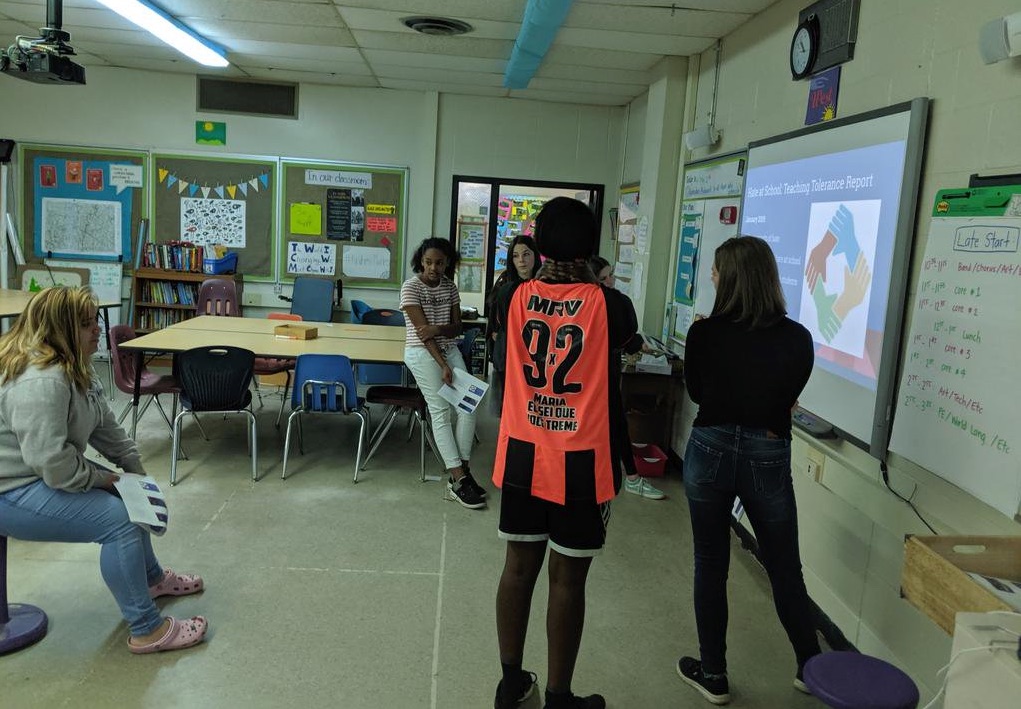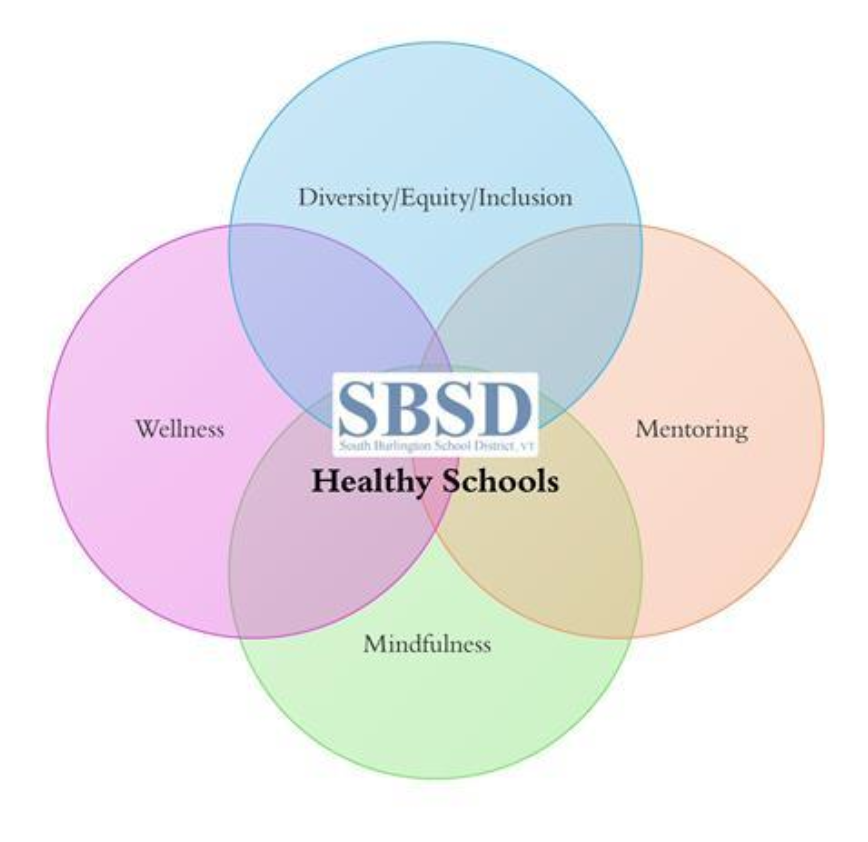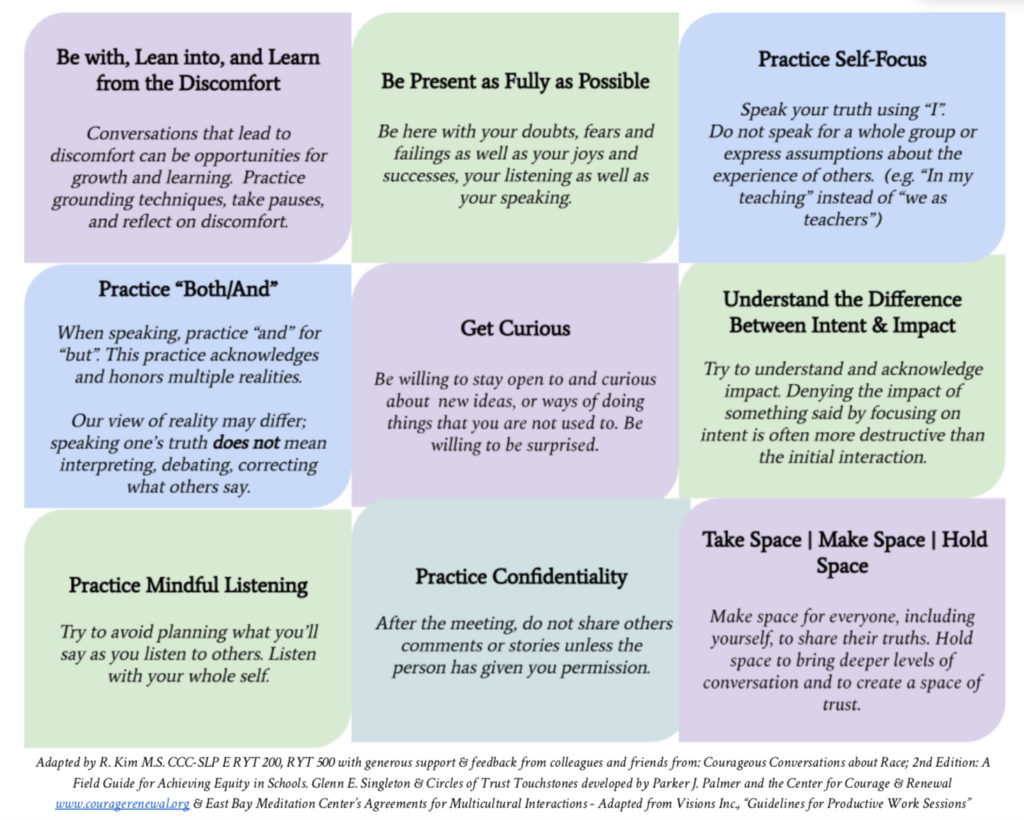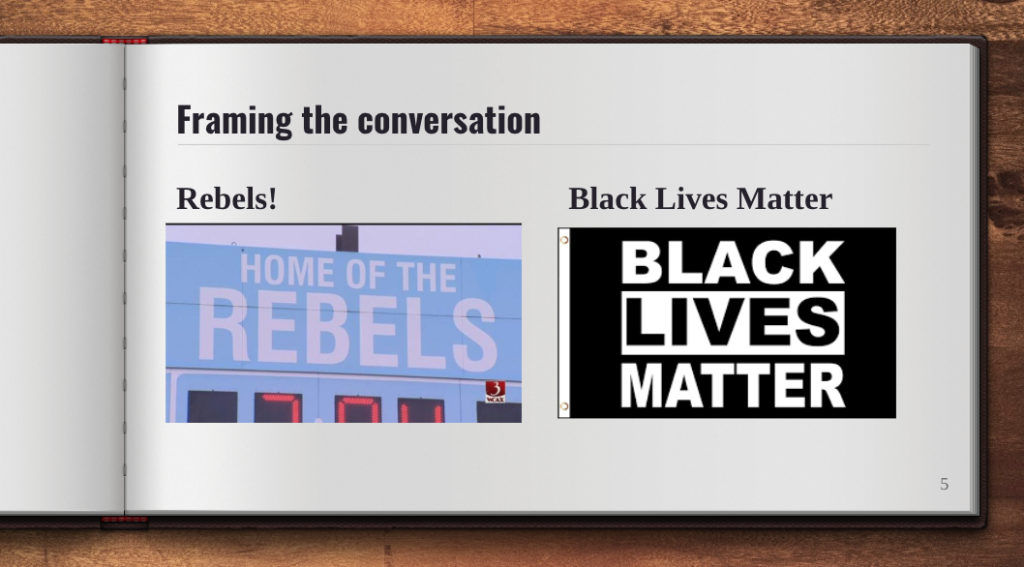Today on the show, we’re going to talk about The End of Average: How to Succeed in a World That Values Sameness, by Todd Rose. We’ll be joined by Emily Gilmore, who teaches world history at South Burlington High School, in South Burlington Vermont.
But first, a few words of background for today’s show.
In case you haven’t spent quality time with the spectacular wrongness of Industrial Revolution philosophers, it will help to know the following:
Frederick Winslow Taylor was a 19th century industrial engineer who spent a lot of time during thinking about how to improve the efficiency of factories. He wanted to get more product out of workers, faster. And when psychologist Edward Thorndike came along and read Taylor’s ideas? His own thoughts naturally turned to — where else? — school. When not avidly playing tennis, Thorndike spent his time trying to figure out how to make schools work more like factories.
Frankly, both of them needed flinging in a pond.
But that brings us to Todd Rose, a high school dropout who now runs one of Harvard’s most prestigious thinking departments. Rose has some ideas that would have made Taylor and Thorndike’s hair curl, but that just might explain why proficiency-based learning is so important to keep pursuing in Vermont schools.
This is Vermont Ed Reads, books with educators, for educators and by educators.
Let’s chat.
Jeanie: I’m Jeanie Phillips and welcome to Vermont Ed Reads. We’re here to talk books for educators by educators and with educators. Today, I’m with Emily Gilmore, and we’ll be talking about The End of Average: How We Succeed in a World That Values Sameness, by Todd Rose. Thanks for joining me, Emily. Tell us a little bit about who you are and what you do.
Emily: I’m so excited to be here! My name is Emily Gilmore and I am a social studies teacher at South Burlington High School, and a Rowland Fellow. I spent two specific years really diving into proficiency and personalized learning. So I’m really excited to talk more about the End of Average because it’s just the most validating book I think I’ve ever read in my whole life.
Jeanie: Excellent. I’m so looking forward to this conversation! I have so many post-it notes in this book. Tell me, what are you reading now?
Emily: Yes. So I am reading There There by Tommy Orange. And I picked it up when I was in Michigan, and sitting on the beach reading about the peoples who inhabited the land originally? Their stories now in modern day are just heartbreaking and so powerful. I just can’t stop reading it and I’m like slowing down, so I can really sit in it. And really feel all of the feelings that come from it.
Jeanie: Yeah, that’s a really powerful book. I love that book. Tommy Orange is indigenous himself, Native American himself. And then he’s writing about urban Indians. Urban Native Americans in Oakland, California. That book was *really* powerful.
Emily: Even the prologue is so incredible. Every educator should read at the very least those first 10-15 pages, going into the history and why the book is so important for everyone to read.
Jeanie: Yeah. I found those pages hard.
Emily: Yes, very…. Like, that was so engaging for me to then really get into the characters too.
Jeanie: Yeah, it’s a great book, great recommendation. So this one, I saw that you tweeted about one day on Twitter and reached out to you right away and said, “Let’s talk about it on the podcast!” And you gave an enthusiastic yay. I found this book to be so enlightening!
My number one takeaway I think was right away at the beginning of the book. The book is divided into three sections. And it illuminated one that we all hold without really thinking about it, or why we hold it. That is what Rose calls “averagarianism”. Is that what he calls it?
I found it so fascinating. And it’s that everything in our contemporary lives is ruled by averages.
How we look at testing in schools, how we place kids in schools, the way we give grades in schools, right? How we think about healthcare and our medical lives, are all about averages. The average blood pressure, the average cholesterol level, the average…
Emily: The size of your foot when you’re born! How long you are. How wide you are.
Jeanie: Right, and the way doctors look at the milestones you hit as a young child, and whether you’re in what percentile. And then in our workplaces, the way we’re evaluated for our jobs, the way we do our jobs, is all impacted by this concept of average. I just want to talk a little bit about the way that Rose lays out how that came to be.
So let’s introduce Quetelet.
Emily: Oh, *Quetelet*. This whole part was really, I think, the most enlightening for me because I spent so much time in college really learning about ideology and sociology. I took a course that was The Sociology of Ideology and Religion, that ended up being focused on really the evolution of communism, but also cults. And also really had an emphasis on eugenics. So this was for me like, oh my gosh, I can’t believe Quetelet was really at the center to spark what became such a key part in really modern history.
Jeanie: He was an astronomer who — for a bunch of reasons — didn’t have the access to his telescope. In astronomy I’ve learned this concept where because people measure the distance between stars or planets with time, and the times that they had weren’t always accurate, they average them. So at the same time that his telescope became inaccessible to him, all of this social data was suddenly available.
Emily: Yep, and he became *obsessed*.
Jeanie: And Quetelet started looking at this social data, which was like, some of it was like measurements of soldiers or like the ages when people died, and he started applying these concepts that he used in astronomy on social data. He determines that being average is ideal and any disparity from average is a flaw. Which is fascinating. Because that’s not how we think about it!
And what was really interesting, what Todd Rose I think is really interesting points out, is that even when you set up an average, like they do it with the average soldier or the average pilot, the average woman — nobody even comes close to the average when you do all those measurements or all those things, right? Nobody, actually. Most people have more disparity from the average than they do likeness. Like more than half.
Emily: Right! And there are actual competitions to see if there was the most average person. Which sounds like the most boring competition of all.
Jeanie: Right.
Emily: Are you going to file your nails before you go? How do you know what exactly you need? Are you going to stand up straight? Anyways, it’s mind blowing that those were those things that people focused on and valued was being the most 50% possible.
Jeanie: All because of Quetelet.
Emily: Right.

Jeanie: But then some time goes by and we meet — *dun dun dun-dun!* — the villain of our story, Galton.
Emily: Yeah, Sir Francis Galton. What an interesting fellow. So he saw Quetelet was I think learning from him at the time and saw that Quetelet was comparing people to the average. So Galton says, “I think you’re better or worse than the average. If you’re above average, you’re better. And if you’re below average, you’re worse.”
Jeanie: He’s related to Darwin, right? He’s a cousin of Darwin.
Emily: Right.
Jeanie: And the founder of Social Darwinism I believe. And he’s an upper-class Brit and he has this notion that if you’re good at one thing, you must be good at all things and that these below-average folks bring society down.
Emily: The “imbeciles”.
Jeanie: Yes, these terms! Like he makes this whole scale of humanity: “imbeciles” all the way up to “the eminent”, “the uncertain”. And as this is the case all the time, Galton defines himself as eminent, of course. Above average.
Emily: Of course, but Queen Victoria is also an eminent. And I thought: she might be the only female [eminant]. Which I would like to look more into.
Jeanie: Right! So, Galton starts looking at standard deviation. Average is only average. And he’s the first person that gets us as a society looking at social data and thinking about being above average or below average. Which really gains a foothold, first in work through Taylor — who focuses on standardization of work to meet the average. But then through standardized testing, IQs, Thorndyke and his standardized tests and his notions, and so I wondered if you wanted to talk a little bit about that.
Emily: Yeah, absolutely. I think Taylor really stands out to me as somebody who, during the Industrial Revolution or post-Industrial Revolution, the whole Western society is trying to figure out how to do things bigger and better and faster and more efficient. For cheap. And that’s where Taylor really makes a huge shift in the whole dynamics of Western society. A shift of “we should have people who are not physically doing the work, but telling people how to do the work”.
Which I think everybody listening and not listening has probably felt: “I’m doing something and the person above me may or may not know what I’m actually doing”. You can thank Taylor for that.
Jeanie: Right. Also humans as cogs. You do the job and that’s it. Someone has decided what the most efficient, best way to do it is.
Emily: Yeah.
Jeanie: There’s no room for innovation. This is like, factory model, where you do the same thing over and over again.
Emily: Yeah, there’s a great quote that I found, hold on one second. So in 1918, so at the end of World War I, Taylor says, “the most important idea should be that of serving the man who is over you his way, not yours.” It’s on page 47 from my book.
Jeanie: Talk about disenfranchisement! And what’s really interesting is that education followed suit.
So Edward Thorndyke who apparently was a very efficient man, who did a lot quickly, was also one of the creators of standardized tests. And he believed, and this is a quote from page 53,
Thorndyke believed that schools should clear a path for talented students to proceed to college and then onward into jobs where their superior abilities could be put to use leading the country. The bulk of students, whose talents Thorndyke assumed would hover around the average, could go straight from high school graduation or even earlier into their jobs as Taylorist workers in the industrial economy. As to the slow learning students? Well Thorndyke thought we should probably stop spending resources on them as soon as possible.
I wonder in what ways schools still produce these results even if they don’t intend to.
Emily: Absolutely. This is also putting it into context, which Rose does, is in 1900, two percent of Americans were graduating from college.
So that is a massive– it’s a massive growth that we’ve seen in the United States, which Rose also talks about not taking that for granted. Like, yes, Thorndyke and Taylor had huge impacts on America, and without that, many people would be in totally different places. And yet those really, really negative consequences are still things that we’re trying to unpack today. Especially the worth of serving those who deserve it, those who are skilled. What does that mean? Who is actually being served then?
When he’s writing this, women didn’t have the right to vote. The Civil Rights Act had not been passed. So we’re looking at such a small section of America, and it’s post World War I. We haven’t seen the Great Depression yet. We haven’t seen World War II. The world is so vastly different that it’s fascinating to think about what this landscape looked like, that he was really talking to.
Jeanie: Right. It’s also a really narrow definition of talent? Who gets to define what talent is and what it isn’t. I worry that it’s really a double whammy for some students. Not only are they not given the resources they need to thrive in our world, they’re also stripped of their own talents because they’re not recognized.
Emily: Yeah, absolutely.
Jeanie: I remember being– I’m a bit older than you. I remember taking standardized tests in the 2nd or 3rd grade. On paper. With bubble sheets! And crying when they got too hard for me because it was progressive, you kept going. I believe they had the name Thorndyke on them. I have this pretty solid memory of the name Thorndyke from my elementary school years. So his tests stuck around, right? Like that model stays with us today through NWEA and SATs and ACTs and all of the standard aspects, all the standardized tests that are norm-referenced. That they’re referenced against an average.
Emily: Right, and even in conversations today with students about when you should sign up for the SAT? Recommendations are being made that you should be taking the SAT when more students are taking the SAT because your chance of being above average is greater because more students are taking the test. That is *absurd*. Especially for students that are saving money, their own money to take the tests when they should be, first of all, not having to spend their own money and not having to pay for a test that is not giving valid results.
Jeanie: Right, because that still only measures certain kinds of talent, right, reading, writing, math. The ACT is a little bit broader, but that’s still a very narrow notion of what talent means.
Emily: Right.
Jeanie: I was also listening to Radiolab. They did a series called G, which was all about IQ tests.
So, as I was reading this book and learning about the ties of standard deviation and average and standardization and norm-reference tests to the eugenics movement? I was also learning about the IQ test and its link to the eugenics movement. And Galton’s language, which sounds very like the eugenics movement, and just feeling like: *ugh*. This grief or this, I guess, rage. That we still use these tools that were used to strip people of their humanity. These tools that were linked to genocide, and to all sorts of horrors are still in our toolbox.
Emily: Right, the forced sterilization that’s still happening today because of ideas that are centuries old and have been proven to be fairly irrelevant.
Jeanie: That gets us to this fascinating part of the book called the Ergodic Bait and Switch. Do you know what I’m talking about? This was thrilling to me on page 62 of the book. Because it’s not just that they were old, they were wrong!
Emily: Right?
Jeanie: “Molenaar recognized that the fatal flaw of averagerianism was its paradoxical assumption that you could understand individuals by ignoring their individuality. He gave a name to this error, the ergodic switch. The term is drawn from a branch of mathematics that grew out of the very first scientific debate about the relationship between groups and individuals, a field known as ergodic theory. If we wish to understand exactly why our schools, businesses and human sciences have all fallen prey to a misguided way of thinking, then we must learn a little about how the ergodic switch works.”
And he proceeds to tell us in this chapter about how the math is wrong. The math we’ve used for centuries? Is wrong.
Emily: It makes sense! *laughs*
When any person talks about their experiences. Even my mother talking about how her three daughters were born on their due dates and how that’s bizarre. Then why have a due date? When you’re measuring and you’re seeing the development of children over time — and he gets into this later in the book — about learning to crawl versus learning to walk and how babies will do that at different times and at different rates? We see it every day. But we’re told something different and somehow we still believe what we’re not seeing.
Jeanie: Yet parents worry over those developmental milestones, and we’ll talk more about that later, and the science that’s debunked them as useful. So the thing I really love that Todd Rose, the point he makes again and again in this book is that: averages just don’t work. Not just don’t they work for everyone, that they’re outliers? But for anyone. There are a ton of anecdotes in the book about how nobody’s really average. I don’t know if there’s one you want to share or if there’s something from your classroom that you’ve noticed.
Emily: First of all, what stands out to me is right after reading the book, I listened to Todd Rose, his interview with Dax Shepard on Dax Shepard’s Armchair Experts, which I love. They both talk about individuality versus individualism and that the focus is really on individuality, the individual person. And they spend a lot of time talking about Todd Rose’s experience and his own educational career, and how, when he was in high school, he failed out. And yet now he’s a professor at Harvard. Very well renowned and is running the Mind, Brain & Education program. Is just phenomenal, and you would never know that he was somebody who failed out of high school.
Jeanie: All of his teachers are in shock that he’s in Harvard. They’re all going, “How the heck did that happen?”
Emily: Right? Exactly! The individual has different needs. And his dad saw that and so his dad was really able to help him. That was when he really became that teacher figure, that one to really intervene and say this, this is why you haven’t been successful yet.
Jeanie: I love that this book comes out of Rose’s own lived experience.
Emily: Yes.
Jeanie: Right. Like his passion for this comes out of his own lived experience as somebody who went back to college and with kids who struggled. Who had to find a different path.
Emily: Yeah and I think, from the other articles that I’ve read in the interviews, he really is so drawn on trying to prove himself wrong and he keeps finding more and more evidence as to why the End of Average is constantly a necessary piece of life.
We need to get rid of the average because we’re all individuals. We love ourselves. And we want to love our potential. As teachers, that’s what I want to see every day.
That’s my goal at the end of the day is for each student to feel like they know themselves a little bit better.
Jeanie: A lot of his stories wrap again and again around this idea of pilots. And building a standard, average-sized cockpit for pilots. And it fitting no one. So there were a lot of errors and unnecessary crashes, because it fit no one.
Then he tells this great story. I almost don’t want to tell it because if you read the book, you should totally read this book. I’m not even going to tell it. Because it’s so great when you realize more about the specific pilot who does this amazing thing.
But when they design for average, no one wins. Like I said, it’s failure for everyone. I think about that in our schools. Because I think unfortunately because of our workloads and our class sizes and the amount of courses we teach and our little prep time? I think it can be really easy to plan for the average.
Emily: Yeah and that’s the visual that immediately comes to my head is in every professional development that has anything to do with personalization, there’s always the image of: don’t teach to the middle! And there’s the row of desks, and one student in the desks and then you have the students on the outside who are below and above. Really it’s just those different pieces of the individual that we see highlighted in that particular classroom.
Jeanie: Yeah. I love this quote that he has on page 66 about that. “Averages provide a stable, transparent and streamlined process for making decisions quickly. And in a way, we stuck with averages because of efficiency, but I just think of all we lose. And what do individual students lose in a system that’s still using norm-referenced tests and focused on how if you’re on grade level or off grade level. That’s part of averagarianism is this idea of grade level.”
Emily: Right. I think that was a really interesting concrete takeaway for me when he talks about Khan Academy and the beauty of Khan Academy, and how it can really meet students where they are. He keeps coming back to this idea that speed does not equal success. And that is something that keeps coming back, and it’s so powerful to really sit and seep in. It doesn’t matter how fast it takes. He gives a great anecdote about driving and he says: “A driver’s license does not record how many times you failed the written driving an exam or the age when you finally obtained it. As long as you pass the driving exam, you are allowed to drive.”
Jeanie: Right. I think we in schools privilege fast processors.
Emily: Oh, absolutely.
Jeanie: All the time.
Emily: It’s easier.
Jeanie: I am a fast processor. And school really worked for me because I’m a fast processor, and I don’t just mean like wait time. I think a lot of teachers try with wait time, but the fast processors, the kids who get it quickly, maybe not deeply but get it quickly, are really rewarded in our school systems.
Emily: I think that looks different too. I have a lot of students in my classes that look visually like they’re understanding what’s happening. Right, if you’re quiet, she’ll move on. She won’t ask any questions.
Jeanie: Yeah.
Emily: That doesn’t mean learning’s happening.
Jeanie: Right. We have a lot of kids who slip through the cracks that way, right?
Emily: Right.
Jeanie: Yeah. Now this book is just *full* of research, and he delves into this idea of pace later on in the book. He mentions an experiment where students are learning probability theory, this math. And they do a control group that learns at a fixed pace. They learn the same material at a very fixed pace. And then they have a self-paced group and they can learn it however long it takes them. At the end when they do the test, 20% of the fixed-paced group achieved mastery and they have defined mastery in a particular way, but 90% of the self-paced group did.

And that data really blew me away. How can we go with fixed pace when that’s the difference, right? So providing varied pacing is challenging in public schools. I get it. It’s really hard.
Emily: Yeah.
Jeanie: I think we have to shift our paradigm of what school looks like in order to make really widely varied pacing work? But it seems really worth it!
Emily: You’re right, the evidence is right in front of us. *laughs* Over and over again.
Jeanie: Ninety percent achieve mastery, and this is statistics! This is not three digit addition. This is statistics. So I’m wondering, have you experimented with pacing in your classroom?
Emily: I’ve definitely used more and more as the years have gone on with really self-driven summative assessments. That really has been a game changer.
Today was the first day going back into the school building for actual work. Going back and thinking about: what are my goals for my students this year with the new crop of 9th graders? And looking at their pictures from 8th grade knowing that they had yet to experience that school year — because we get those little pictures from the incoming students — and going back and then thinking about: what was the experience, the reaction of my students from last year, my 9th graders leaving their 9th grade experience?
Seeing some of the still 8th grade pictures because they didn’t get their school pictures updated and thinking about the growth that happened when you don’t assign them a topic. That, for me? Is a small jump into the self-paced.
A lot of the work that we’re doing in the world history classroom is removing those immediate definitions and terms that went along with the old, very Eurocentric curriculum that I learned when I was in high school. And really opening it up to look beyond things that you know.
So when we’re learning about forms of government, we’re going to look at pivotal shifts in forms of government, so you need to be able to show me:
- What was one form of government?
- Who was trying to change it, and why?
- And now what’s the new form of government if there was a successful change?
- Or what was the form of government that they wanted in the attempt to overthrow the status quo?
And through that, students were looking at everything from what was happening in Venezuela to what was happening in Mexico. I’m sure there’ll be a lot looking at what’s happening in Hong Kong right now. And students were looking at 500 years ago to what was happening in modern day and they’re having these conversations together. Comparing what’s happening with democracy and how democracy looks in so many different ways.
But they had weeks to work on it in class. And so some students were working on the first step of the project up until the final day because that was what was most interesting to them. It didn’t mean that they weren’t interested in analyzing the pivotal shifts and the different forms of government. They were like, “But what is this government? It’s so complex.”
And that to me was more valuable than having them jump through the five steps that I had put together to eventually look in deep analysis — which I’m realizing is more of like a college project.
But by having those really varied opportunities for students, they’re able to choose how they’re using their time each day.
Jeanie: So it sounds to me like you are using pacing and voice and choice in really powerful ways. One of the things I hear from teachers a lot is, “But how do you manage all of that? How do you manage so many kids on so many different topics?” I hear that you have this overarching topic and on different paces, so I’m asking you: how does Emily Gilmore manage this?
Emily: *laughs* It takes a lot of control actually, to let go of the old curriculum.
When I first started working at the school I’m at right now, I had had a totally different teaching experience and a totally different upbringing through the education system than what I was experiencing in my first year teaching. I was looking at this really, *really* Eurocentric, very confusing curriculum that went from the Renaissance to the Berlin conference in Africa.
So you went from “Germany doesn’t exist” to “Germany’s imperializing a country and committing genocide”. So what happens there?
That was very confusing and felt like a lot and very stressful. Every day I was walking into school, how am I going to teach the enlightenment? World War I’s really important. How do I teach the Industrial Revolution? Those things aren’t there. How do you make those connections?
The next two years I started to really think about: that’s okay. I can introduce it and I can give anecdotes, but the bigger idea is that students care about what they’re learning in world history. They’re in 9th grade.
I can’t tell you how many — particularly, it just so happens to always be this group of 49 to 70 white men — who are reading Civil War books and World War II and are all: “You’re a history teacher? Now what are you teaching about the Civil War? What are you teaching about World War II? Have you learned about these different battles in World War I?”
I’m like: “Hm. Mm-hmm.”
I have no reason to teach my kids the specific battles of World War I as 14 year olds! They need to learn about the world around them. And that there are different people. And that different people are good and that they are interesting. Your experience is different than the person sitting next to you. We’re going to build empathy and understanding of that first. And that, to me, is world history.
Jeanie: So do you find that your kids are more invested because they have this choice of pace, product, and topic?
Emily: I think it takes a lot at the beginning of the year? And that’s really the biggest source of anxiety? Is a lot of students unlearning the passive form of education that they are mostly accustomed to.
And that’s not saying that all of their learning experiences by any means, but a lot of insecurities really bubble up.
Especially 14 year olds who are right at the cusp of figuring out who they are and what they’re interested in and worrying about,
“If I say I’m really interested in the French Revolution, is the person next to me going to make fun of me?”
That is a really tough spot. And so that is really the focus of the beginning of our 9th grade experience. It’s like who are you? Everyone’s going to be vulnerable together. And we’re going to build trust. We’re going to build an environment that’s inclusive.
And from there the students really begin to think about, oh so when she gives us choice, it’s not overwhelming.
Jeanie: This is perfect. I was going to have to say, let’s get back to the book, even though Emily’s classroom is way more interesting. But actually what you’re talking about? Directly applies to the book. Which is: Rose introduces this idea — and I’m sure he’s not the only one to use it — called the jaggedness principle. This idea that two people who have the same IQ? Can have vastly different sorts of talents and skills, or strengths and weaknesses within an IQ test. That they’re not the same, even though they both have the same number. So I’m wondering about how you use this idea of the jaggedness principle to really help students get to know themselves? And for you to get to know students and know them well, as learners and as humans?
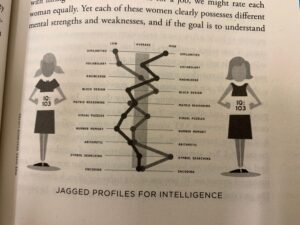
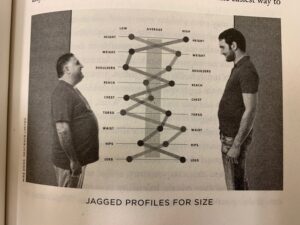
Emily: What really stood out to me is thinking about personality tests and the jaggedness principle. It’s just something that I really continued to come back to as I kept reading about. And eventually he does make that connection. That people are complex and that, in its own right, is important. And that is what teachers see in their students. I think that for me is the part that I have embraced the most. And I now I’m getting back into, okay, so how do I take the complex identity and teach them the world history curriculum that I’m required to by law? That’s like trying to make that work.
But the personality tests keep coming in from me. When I was in high school and taking psychology, we took the Myers Briggs personality test. And I was INFJ. It was INFJ is the least common personality type. I was like, “Oh, that’s so cool.” Jerry Seinfeld, you’re an INFJ!” and as I’ve grown up–
Jeanie: I’m so unique! *laughs*
Emily: I’m so unique! I’m in a percentage of people who are also INFJ! *laughs*
The really important part is the first part of INFJ, it’s I, it’s introverted. In high school I felt very, very introverted. I knew I wanted to be a teacher and I would sit back in class totally silent and just absorb. And then as soon as I entered college and was studying teaching, I was like, “Oh, I’ve got to have a self-talk. I can’t actually be an introvert.”
And it gets to that idea that your personality actually it changes in different situations. Which jaggedness principle then connects to all these different ideas that he pulls in with Bloom and lots of fabulous people.
Jeanie: I just think if we could really help our students begin to understand their own jaggedness, their strengths, their places of challenge or places for growth? We could really transform their lives.
Emily: Absolutely. Absolutely. And I think that also builds that compassion that when you see students who are maybe struggling with a creative project, because it’s called a “creative project” and a student previously hasn’t seen themselves as creative. I remember that feeling when I was in high school where you had options for your summative assessment. It was your final project. and it was a test. You could take the multiple choice test. You could do a book report. I remember one teacher always wanted us to make a rap. Or you could do something creative and you’d have to talk to the teacher. And I was like, “Oh, essays sounds great to me.”
Jeanie: Rapping is hard. I am older than you because nobody ever gave me the option in high school of making a rap. I remember we could write a play, maybe.
When you’re good at school, it can be easy to say, “Oh, I’m not doing the creative thing. I’ll take multiple choice test please, thank you very much.” I think it can get really frustrating for students when we ask them to step out of those comfort zones, especially those kids who are good at doing school.
This is where proficiency-based education really frees us up, right? Because the criteria is the same but you can demonstrate it in so many ways.
And that leads us to the next principle that Todd Rose outlines, which is the pathways principle.
I think this is so relatable to Act 77 and to our work in schools right now. The kind of things we’re still figuring out. He’s suggesting that, like it or not, whether we want this to be the case or not, we all take different paths as we learn and grow. He gives countless of examples of different ways people learn to read. Different ways science shows us, research shows us, different ways that people learn to crawl or walk. That we all develop differently. That there’s no such thing as a single ladder of development. There are many different pathways or webs. So I’m just curious. I think that we’re still on the cusp of figuring out flexible pathways for students. One way I hear you doing it is saying, here’s the learning, here’s the big thing. Find what interests you and apply it to that.
Emily: Yeah, and the more that you learn about your students too. That’s been the greatest takeaway for me, is that I feel this deeper sense of love. And the environment is so much more positive, when you see students sitting at their desks or walking around the room looking at other people working and you don’t see anybody judging one another and they’re asking questions like, “Hey, where did you find that?” or, “I read this really good article, but it actually, it connects more to your project. Do you want me to send it to you?”
Jeanie: I was in your classroom once last spring, and it was such a calm and focused place when I was in there! So I’m going to share a quote, another quote from Rose that I really loved from page 129 because I think it’s really relevant to what we’re talking about, and we’d almost forgotten about him.
Emily: Oh no.
Jeanie: And The End of Average! We got so interested in what we were talking about.
“The fact that there is not a single normal pathway for any type of human development, biological, mental, moral or professional, forms the basis of the third principle of individuality, the pathway principle. In all aspects of our lives and for any given goal, there are many equally valid ways to reach the same outcome. And second, the particular pathway that is obstacle for you depends on your own individuality.”
I feel like this needs to become the heart of schooling.
Emily: Absolutely.
Jeanie: There’s no one way. There’s no one valid way. And I think he goes on to say that talent lies in all the different paths. I was really inspired by that. It makes me so happy about the flexible pathways portion of Act 77. And thinking about how we can help more students be successful by broadening the scope of pathways available to them.
Emily: I think it even comes down to what “successful” looks like and feels like. Because that’s so tied to this idea of success according to Thorndyke might look different than success according to Galton. And success according to you and I! That is so important to really unpack. Success for whom and where and how do you achieve that, again, comes back to those pathways. But success is so I think tied to a certain set of values that we see in society.
I see the hinge of the status quo of what we’re working towards, really in Vermont of: we want all of our students to be successful.
And I think also the caveat there is whatever success looks like for them and feels like for them. Not what I think is successful for a certain student or their family or whatnot. But how that student is defining for themselves. I think that’s such the central piece of what we are really talking about is how do we get students to really have that metacognition of: what does it look like and feel like when *I’m* feeling successful? How can I bottle that up and take that with me for the rest of my life?
Jeanie: What you’re saying reminds me that– and I think Rose would agree — we’ve got a really narrow notion of what success looks like in schooling. So if you’re good at math, reading and writing, you’re a success.
Emily: And athletics.
Jeanie: Yes, but academically, we have this notion that math, reading and writing are the pinnacle, right? So if you take calculus, you are one of the smartest kids in the school, and we fall back on Galton and we assume that if you’re good at calculus, you’re good at everything else, right? You’re just smart.
And I just really think, not just because it’s the right thing to do for individuals but also because our economy is demanding it of us, that we need to broaden our notion of the many ways there are to be successful and talented in this world, of the many ways in which there are to thrive. Back to that podcast, the Radiolab G podcast. One of the hosts on there points out that in Darwin’s world, in true Darwinism, variability is a strength. In the standardized world, variability, doing things differently, being an outlier is not a strength. You have to succeed in these ways, in these categories instead of really appreciating the full broad spectrum, the broad ecosystem that is humanity.
Jeanie: Just reading this book made me realize, made me think about how a lot of teachers I know are really struggling with implementing proficiency based education because they’re like, “Kids don’t want it. They want to go back to the way things were.” Part of that’s comfort, right? Like just give me the quiz, right? Don’t make me *really* demonstrate anything, just give me the quiz.
But part of it is I think that our whole world is set up in this way that demands conformity and sort of asks us to compare ourselves with each other.
And when we start shifting schooling to be more about:
- Who are you?
- What’s the right path for you?
- How do you access learning in the way that’s best for you?
We’re not just fighting against years of schooling that didn’t ask that, we’re fighting against a whole world that doesn’t ask that of kids. It’s countercultural in a way.
Emily: So what happens when we’re seeing how proficiencies work naturally in the classroom? And fit so many of the good practices that teachers have? Just like you were saying, students may say that they don’t know what it is and they don’t understand it and whatever, but if you take that out of the conversation and you just let the students learn and you’re using that language? They get it eventually. And they move on. They’re adapting to everything. Everything is new for them, and that’s life for all of us is the next step is always new.
Throughout the whole book, Rose keeps bringing up that; with all of these examples, there’s groups of people who are being hurt in the process. And that’s the greatest risk of all: by not doing anything, we’re hurting more people than we are helping.
Jeanie: We’re under-serving some and over-serving others.
Emily: Right, but we’re over-serving so few. And we’re under-serving *so* many.
Jeanie: Right, and disenfranchising them from their own sort of learning. Their own ability to learn.
Emily: Right.
Jeanie: And the way they think of themselves as learners. We have a lot of power.
Emily: We do. It’s overwhelming!
Jeanie: It is. But we have a lot of power to do good, to help students find themselves and feel good about themselves and cultivate their own awareness of their jaggedness so that they can navigate their learning well into the future.
Emily: Yeah.
Jeanie: I am just starting the doctoral program here at UVM, and I feel like, “Oh, I know myself as a learner so well, now.” I’m sure there are challenges ahead, but I wish I knew myself as well as I do now when I was an undergrad.
Emily: Yeah, or even in high school. I just think like, “Oh, the stories I could tell myself. And my friends, whisper in their ears: you won’t believe what you’re doing in 10 years. Stop doing that.”
Jeanie: Are there resources that you use to help students get to know themselves or that you use to get to know students better?
Emily: We keep trying new things each year and I think especially with the more and more resources that Teaching Tolerance is putting out around identity and social justice and really making sure that the work that we’re doing is productive and not harmful? Has really helped me be reflective in getting to know you activities. Because so many of them are alienating to so many of our students.
That’s really been an important learning process for me of how to best learn about our students.
I would say that’s definitely been the most useful of how can we really set up the learning processes for our students. So I start the year off with my identity iceberg. What do you know? What can you make assumptions about? Then what’s below the surface? What are the things that you need to learn about me in order to really understand who I am? So that’s some of the work that we do at the beginning of the year, and it’s amazing. It’s *amazing*.

Jeanie: I’m also just thinking about how equity work is such a natural fit here because it’s about celebrating difference and honoring difference. And noticing difference. And isn’t that what we want for our students? For them to understand their own difference. In order to make the most of it.
Emily: Right.
Jeanie: In order to develop their talents, to know where their gifts are.
Emily: And to love themselves.
Jeanie: They all come with gifts! And we need their gifts in this world. We need *all* of the gifts we can get in this world. We need all of the genius we can get in this world. There’s so much to do.
Rose ends with these recommendations really for higher-ed, and I just thought, “Oh, we at Vermont are so ahead of the game!” Because he starts with the idea that there are three concepts to transform education. One is to grant credentials, and not diplomas. This idea that you get credentialed because you demonstrate a competency or proficiency at skills which I think we’re sort of using that competency based approach even if we’re not giving kids specific credentials.
Emily: Although some schools around the state are using credentialing and they’re really powerful.
Jeanie: And micro-badging, right?
Emily: Right, absolutely.
Jeanie: Micro-credentialing and badging, and so… I just combined those two, micro-credentialing and badging. You’re right, they are. Do you have any examples you’d like to share?
Emily: I think about the work that Jen Kravitz and Erica Walstrom and Marsha Castle did at Rowland with their STEM and their global studies badging credentials. I’ll come up with the right term eventually, but their programming is fantastic. Where students are really choosing a path that’s interesting to them while maintaining the curriculum that is in place at the school, but they’re navigating it through a particular lens and field of interest.
Jeanie: Then the second concept is to replace grades with competency. So we’re beginning that work. I think a lot of people are really navigating the hard road of getting rid of letter grades and moving towards a competency-based system. Not easy.
Emily: Not easy and lots of learning and self-reflection I think is the really big takeaway in this process.
Jeanie: It requires a lot of educating parents.
Emily: Yes.
Jeanie: Yes, your kid will still get into college.
Emily: Right.
Jeanie: Yes, they’re still a good student even if they don’t have straight As.
Emily: Right.
Jeanie: They’re still a good learner. And the grading system we have is not ideal anyway. It doesn’t really tell us anything. So scrapping it for one that actually defines what they’re proficient at seems worthwhile to me even though the road is hard.
Emily: Yeah, and I think there’s more meat behind it too. Now students have products to prove their proficiencies rather than maybe some conversations with teachers to bump up grades.
Jeanie: Yeah, evidence.
Emily: You’re right, evidence.
Jeanie: Evidence of learning.
Emily: Yeah.
Jeanie: Right. Then the final principle is to let students determine their educational pathway. I think we’re still on the road with this one. We’re still figuring this one out.
Emily: Yeah. I think there’s definitely more and more options available pre-K through 12. Then it’s that jump from, well, what does undergrad need for the application process and what will they accept and how will they compare the applicants to one another?
Jeanie: Yeah. Well, I think these things going hand in hand. You need to be able to define proficiency to have a competency- or proficiency-based system in order to create flexible pathways that lead to the same credentialing, if you will. The skills are really important. It’s not that we’re saying throw those out and let kids wander around wherever. They’re still aiming towards that learning goal. We’ve defined it such that kids can get there in a lot of different ways at different paces. They can demonstrate that in different ways. The core skill, the core learning is the same, but the pathway is different. And those things are interdependent. And! Dependent on knowing students well and helping them know themselves well. And helping them communicate their identities as well to the adults who are there to coach them and provide them the opportunities they need.
Emily: Absolutely. In the long term that makes our world more successful as we have individuals who are aware of their behaviors and the impact of their behaviors and have real confidence in their abilities to move the work forward. Whatever that work may be.
Jeanie: Yeah because we don’t need any cogs in machines right now. We really need creative people who are able to use their talents, whatever they are.
Emily: And to continue to adapt to do that as well.
Jeanie: Yeah. I am *so* grateful to you for introducing me to this book. I think I just saw you tweet about it and was like, if Emily’s reading it, it must be good! Because I enjoyed every second of it. I must have 600 post-it notes in it, and we’ve just scratched the surface. Are there any other quotes you’d like to share?
Emily: Oh boy. Let me see. I will leave us with a little bit of a scare maybe. This is what we want to avoid at all costs that I think is important to leave us thinking to grapple with a little bit. This was on page 33, Sir Francis Galton, and he said, “What nature does blindly, slowly and ruthlessly, man may do providently, quickly and kindly.” How we apply that? I think is really what sets the tone from the rest.
Jeanie: Yeah. In a healthy ecosystem, lots of things flourish, right? In a healthy ecosystem, there’s diversity. We can also create diversity in our schools.
Emily: We’ll let our kids flourish.
Jeanie: Let all our kids flourish. Thank you, Emily, for all you do to help students at South Burlington flourish and thanks so much for taking the time to talk about this book with me right before school begins. I really appreciate your time and your thoughts and your many examples from your classroom.
Emily: Thank you, Jeanie, for the reset.
